The above painting is of the headquarters of the Dutch East India Company (VOC), estd. 1602. The painting is from later in the 1600s.
In the earliest phases of the West Europeans’ construction of transoceanic
empires, from 1415 CE through the early 1500s, well-armed Portuguese and
Spanish flotillas would use the height and maneuverability of their ships and
the firepower of their cannons to overcome Indigenous populations and then
either outright rob them of their crops and possessions, or force them on pain
of torture, death, or enslavement to trade those items on highly coercive
terms.
The earliest of those contacts were, as we saw here, “hit and run” raids. But soon, the plunderers saw the advantages of maintaining more permanent garrisons to control the Indigenes and extract and exploit their resources. Those coastal garrisons then grew into the remarkably durable, trans-oceanic settler-colonial empires that plunderers from the west coast of Europe established and maintained on every continent except Antarctica between the 16th and 18th centuries CE.
The early Portuguese empire-builders had pioneered the (neo-Viking) model of organizing a multi-nodal, trans-oceanic plunder network, which they did down the coast of West Africa. Then, in the 16th century it was the Spanish who pioneered the model of a more durable settler colonialism, which they did initially in the Caribbean and the Americas. (Later, the Portuguese, seeing the profitability of this model, tried to institute something like it in Brazil.)
The Casa de Contratación (House of Trade) that the Spanish monarchs established for this purpose assigned exclusive control over vast tracts of land in the “New World”— including all the human and non-human resources therein—to conquistadores who were favorites of the king, under a system called the encomienda. That system had been perfected over some centuries within Iberia itself, as the Christian lords of Castile and Aragon seized—or, as they claimed, “reconquered”— successive tracts of land from their former Muslim rulers. It was then transferred with few changes, but on a far larger and more lucrative scale, to “New Spain” and “New Granada” in Central America…
The anti-Islamic roots of West European empire-building
In this and several other respects, the Spanish monarchs’ Conquista of the Americas was a continuation of the Reconquista of most of Iberia that their predecessors in Iberia had successfully undertaken of their home peninsula. The year 1492 was the turning point: that was the year in which Ferdinand and Isabella finalized the Reconquista by taking Granada; they also, shortly thereafter, commissioned the navigator Christopher Columbus to pursue his plan of sailing West to find a new route to “the Indies”… (As we know—but he apparently never did—he arrived at a completely different continent, instead.)
The anti-Islamic (or actively Islamophobic) impulse was a strong, continuing motivator for the West Europeans as they built their empires. Long before the Portuguese sent their first plunder fleets down the west coast of Africa, the merchants and monarchs of West Europe were well aware that Asian polities had manufacturing economies of a level of innovation, sophistication, and capacity that far exceeded anything found in Europe—in all fields except, perhaps, in the two crucial realms of shipbuilding and gunnery (though the Asians were very strong in those fields, too.)
The Europeans had seen the tangible proof of Asian inventiveness and capacity from the wares of traders like Marco Polo who had traversed the whole Asian landmass during the 13th century CE, when the Pax Mongolica was still more or less intact across the whole continent. But the Europeans knew, too, that all the main land and sea routes connecting Europe to the riches of Asia were, by the 14th century, tightly under the control of various Muslim powers.
The Catholic Europeans had been actively battling Muslim powers in and around the Mediterranean in the “Crusade” wars they had been fighting since the 11th century. In the 15th century, after the Portuguese and Spanish monarchs completed their Reconquistas in Iberia, they continued to see themselves—and were encouraged by the pliant and ambitious Catholic popes to see themselves—as locked in an apocalyptic battle to the death with the forces of Islam. Throughout the 15th century, as Portuguese navigator/plunderers pushed ever further down the coast of Africa, their key quest was for a viable alternative route to the riches of “the Indies” that could circumvent, and hopefully finally break the Muslims’ control of European-Asian trade routes. In 1488, the Portuguese finally reached the tip of South Africa and a few years later they entered the rich trade routes of the Indian Ocean…
It was that same quest to connect with the riches of “the Indies” that pushed Ferdinand and Isabella to back Columbus’s project of finding a completely new route to the Indies by sailing west.
The distinctive cruelty of transoceanic empires
Human history has seen the rise and fall of many different empires, including some earlier, largely maritime proto-empires like those of the Vikings or some Polynesian polities. But throughout history, the vast majority of empire-type polities have been predominantly land-based, and were formed as one stronger polity overcame, subdued, and then to some extent incorporated the remnants of polities located on land contiguous to areas it already controlled. That was how those land-based empires grew.
The creation and maintenance of all empires (as of all or most nation-states) is built on the use, or threat of use, of violence and force. But the longlasting transoceanic empires that Portugal, Spain, England, Netherlands, and France created in the “modern” era had a key feature that made them distinct from all the land empires that have ever existed. Namely, after encountering and subduing the Indigenous people of a polity on a landmass far from Europe, the rulers of these empires did not need to fear any retribution against their own home populations from those distant, conquered peoples. Hence, the administrators of these empires never needed to search for a stable, negotiated modus vivendi with the leaders of the conquered polities. They could treat the Indigenes with a high degree of cruelty on a continuing basis, for just as long as they wanted to. (Read more on this here, or here.)
The cruelties inflicted by these transoceanic empires fell into two main categories. The first of these was the subjugation, enslavement, and very often the forced “conversion” to Christianity of the Indigenes of the conquered lands. The second was that the European colonizers could (and very often would) transport large numbers of Indigenes by ship from their own home turf to distant locations, uprooting them from their ancestral lands and waterways, breaking up their families and communities, and shipping them to places where they had few natural allies in the hinterland to aid them in any project of resistance.
Regarding the treatment of Indigenes in their own “home turf”, the conquerors would enslave large segments of the local population and force them to produce the local goods that the conquerors craved: in the Americas, gold and silver; in the islands of “the Indies”, the Five Golden Spices; in the Caribbean, sugar; in North America, tobacco, and so on… As a matter of course, the conquerors would also use Indigenous women and girls as sex-slaves.
Then, if the Indigenes in any place objected to that treatment and tried to rebel, the imperial administrators could—and very often did—round them up in their hundreds and trans-ship them to a completely different shore.
In the Caribbean islands, the gross mistreatment that the Spanish, English, and other colonizers visited on the Indigenes fairly speedily, within just a few decades, wiped out their communities completely. To continue running the very profitable extractive projects the colonizers had established there, they had to import enslaved laborers whom they shipped in from the North American mainland, or from Africa.
Soon the buy, selling, and trans-oceanic shipping of enslaved persons became a large business venture in its own right. Slave-raiding parties would set out from the coastal garrisons the Portuguese had established in West Africa, then ships owned by Portuguese, English, or other European “trading companies” would ship their “product” to the slave markets of the Americas.

The “Royal African Company” founded in London in 1660 by the Duke of York, later King James II, was one of the most notorious of these.
But long before 1660, the English and Spanish had each shipped large numbers of captured Indigenes from North America to work in the sugar plantations of the Caribbean. Later, the French and other Europeans would ship hundreds of thousands of enslaved captives from East Africa to the islands of the Indian Ocean. The Dutch would ship many thousands of enslaved captives from Indonesia to South Africa and elsewhere.
All those forms of transoceanic shipment of enslaved captives were a foundational aspect of “modern” European empires.
The role of Catholic church bodies
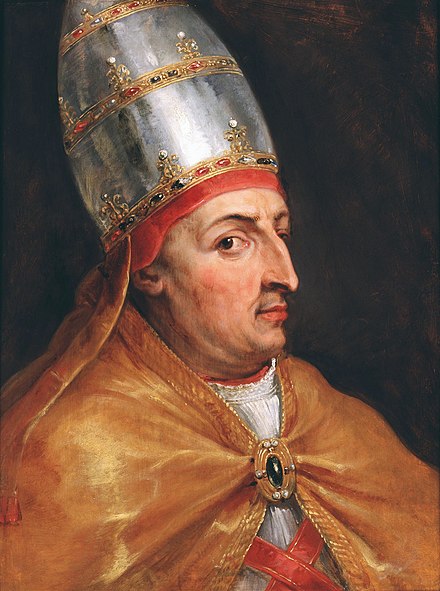
In 1452, as the Ottoman Muslim forces were poised to take Constantinople from the Christians—which they managed to do the following year—the Catholic Pope Nicholas V issued an edict titled “Dum Diversas“, later also known as the “Doctrine of Discovery.” That edict authorized the Portuguese king to invade, search out, and conquer any Muslims or “pagans” wherever he wanted; to seize all those people’s properties and lands; and to subject the conquered non-Christian peoples to perpetual enslavement.
Pope Nicholas may have been trying to incentivize the Portuguese to join in yet another “Crusade” in the Mediterranean. But the Portuguese were not about to be drawn into the Mediterranean. They were already busy running their large-scale plundering project against the peoples of West Africa (who were probably a mixture of Muslim and “pagans”.) So they took Pope Nicholas’s edict as giving them encouragement to continue and intensify what they were doing in West Africa; and later, it dictated how they would act in India, the “Spice Islands” of the Indies, and Brazil.

In 1492, as we know, Ferdinand and Isabella of Spain, who also claimed to be deeply Catholic, launched their own, separate empire-building project. Two years later, a pro-Spanish pope amended the “permission” that Dum Diversas had earlier given to the king of Portugal: through the Treaty of Tordesillas this pope now determined that Portugal would have the permission to search out, seize, plunder, and enslave non-Christian peoples only to the east of a line running roughly between Greenland and the middle of Brazil, while Spain would now have those same rights to the west of that line.
The Spanish monarchs were fervent supporters of the (often extremely violent) conversion to Christianity of the Indigenes of the lands they conquered. On his second voyage to the Caribbean (1493 – 1496) and his later two voyages, Columbus took with him monks from the Benedictine and Franciscan orders. Soon, monks from those orders as well as Dominicans and Augustinians were an integral part of all the projects the Casa de Contratación and its Conquistadores undertook in the Caribbean and the Americas.
One of the early Spanish settlers in the “New World” was a young man called Bartolomé de las Casas, who in 1502, aged 18, traveled with his father to take control of an encomienda in Hispaniola. There, he participated in slave raids and military expeditions against the native Taíno population before he returned to Spain to study canon law (!) In 1511, a Dominican preacher called Antonio de Montesinos preached a fierce sermon in Hispaniola that strongly criticized the settlers’ treatment of the Indigenes.

Las Casas was initially one of those thus accused, but soon he underwent a change of heart and joined the Dominican order. Over time, he became one of the harshest Spanish critics of the oppression of the Indigenes, writing tracts denouncing their treatment. In 1550, he participated in a key debate in the Spanish university of Valladolid in which his opponent argued that the “Indians” were less than human, and required Spanish masters to become civilized. Las Casas countered that they were fully human and deserved to be treated as such.
Las Casas’s position was somewhat compromised by a follow-on argument he made, namely that while the Indigenous “Indians” should not be subjected to enslavement, maybe it would be better to replace their labor with that of enslaved Africans. Nonetheless, he did successfully persuade the Spanish king to enact some minor reforms in the treatment of the Indigenes in Hispaniola (present-day Haiti and DR.)
In 1540, Pope Paul II founded an entirely new order of priestly monks whose central task was to support the settler-colonial projects undertaken by the two Catholic countries, Spain and Portugal. These were the Jesuits, an order that for centuries had a deep involvement in West European settler colonialism. The Jesuit priest Matteo Ricci, working on behalf of the Portuguese, spent the years from 1582 until his death in 1610 in China, where for several years he was a reportedly close advisor to the Wanli emperor of the Ming dynasty. (Quite possibly, the papal authorities were hoping he might succeed in winning not only the Wanli emperor but also all his subjects over to the Christian faith, as had happened 1100 years earlier with the Roman Emperor Constantine. In Beijing, it never happened.)
In 1626, the Jesuits established the first of what would eventually be 30 Reducciónes in a Guaraní-populated area in the interior of South America near the place where today’s Argentina borders both Paraguay and Brazil.
These Reducciónes were a form of colonial practice used in several other parts of South America as well, that the Jesuits pursued with particular enthusiasm. They are best understood as analogous to the strategic hamlets the United States established in South Vietnam during the war against the Vietcong guerrillas. You can think of these strategic hamlets as being intended drastically to “reduce” the access that the Indigenes captured inside them had to their own native lands and resources outside the Reduction, as well as the contact they could have with their family members and friends still outside them.
They were camps for forced labor. They were also a crucial colonial tool for mind control, aka cultural genocide. This, because they were designed specifically to further the Spanish monarchs’ continuing campaign to convert all the peoples of South America to Catholic Christianity, by force if necessary. That’s what the Jesuits were doing there.
The younger, Protestant empire-builders
The empire-building projects that the English and Dutch polities launched in the early 1600s had goals and motivations somewhat distinct from those of the older-established Portuguese and Spanish empires. In the late 1500s, both the English and the Dutch states had arisen specifically in opposition to attempts by the Catholic monarchs of Spain to subjugate those peoples and to wipe out the dangerous threat of Protestantism that had taken root in both societies. Then, in the first half of the 17th century, both England and continental Europe saw lengthy and debilitating conflicts that had deep inter-religious (Catholic vs. Protestant) aspects.
Those were the conditions under which London and Amsterdam both launched their transoceanic empires.
Profit was the over-arching goal for both of them. The “conversion” of pagans to Christianity was almost not a concern at all for the Dutch East India Company (VOC) as it built a brutal and powerful trading (and slave-trading) empire in the Indian Ocean, or for the Dutch West India Company as it built up the trans-Atlantic trade in enslaved Africans.
For the English, there was a strong “Protestantizing” thread to the key settler-colonial project that London pursued closest to home: the one in Ireland. But there, the main mechanism was not the forced conversion of Eire’s many Indigenous Catholics, but rather their displacement and their replacement by newly imported phalanxes of staunchly Protestant settlers. Elsewhere, the English empire-builders were fairly lackadaisical (or pragmatic) in the ways they deployed religion as they built their empire. On the Caribbean islands where English planters held sway, they and visiting clergy-people had earnest discussions over whether it would be a good thing to offer baptism to their enslaved workers. Might this help make the workforce more docile and compliant, some wondered? Or might it instead give them the dangerous notion that they were just as human as their masters? For many decades, the consensus among the planters was that talk of baptizing the enslaved workers was definitely best avoided.
From 1642 through 1649, England itself was riven by a Civil War in which many new, mainly ultra-Protestant (“dissenting”) religious trends emerged. That Civil War ended with the restoration to the throne of King Charles II who, though nominally Anglican-Protestant, had strong Catholic sympathies—as did his brother, the founding head of the Royal African Company. The end of the Civil War freed up a lot more energies and resources for the pursuit of English settler colonialism on the North American mainland; and the monarchs and the merchant “companies” that pursued these projects hit on the efficient idea of offering many of these land-grabbing opportunities to Puritans, Quakers, and other Dissenters, as well as to English Catholics. All these hopefully loyal subjects of the Tudor crown could now get rich together, alongside the Anglican settlers in the settler-colonial projects in the New World!
The idea of baptizing the continent’s Indigenes was only rarely discussed in those early centuries, though the English Catholics in Maryland made some efforts to do so. The idea of baptizing the tens of thousands of enslaved Africans who soon made up the main workforce of the Southern states was, throughout the 17th and most of the 18th century, considered even more verboten.
The major goal of the parallel transoceanic empires built by both England and the Dutch was, as noted above, the pursuit of profit for the investors in these ventures. In London, for several centuries, the monarchs and their relatives held significant stakes in the various “companies” that undertook the empire-building. In Amsterdam, there was no royalty; indeed, the whole political system in the “United Provinces” was run very like a merchant company, while the English monarchy still retained many of its deep feudal underpinnings. But in both capitals, the development of empire acted as the main spur to the development of basic institutions of profit-maximizing finance capitalism such as joint-stock companies, insurance pools, and so on, just as the booty from the two countries’ imperial holdings provided a huge proportion of the start-up capital that the development of capitalist enterprise at home required.
(In Spain, meanwhile, most of the profits from imperial plunder overseas were ploughed into seemingly endless Catholic/Habsburg wars back home in Europe. Neither Spain nor the Portugal, in both of which the monarchies retained tight control of their countries’ imperial ventures, ever saw the development of capitalist enterprise at home on anything like the scale in England or Netherlands.)

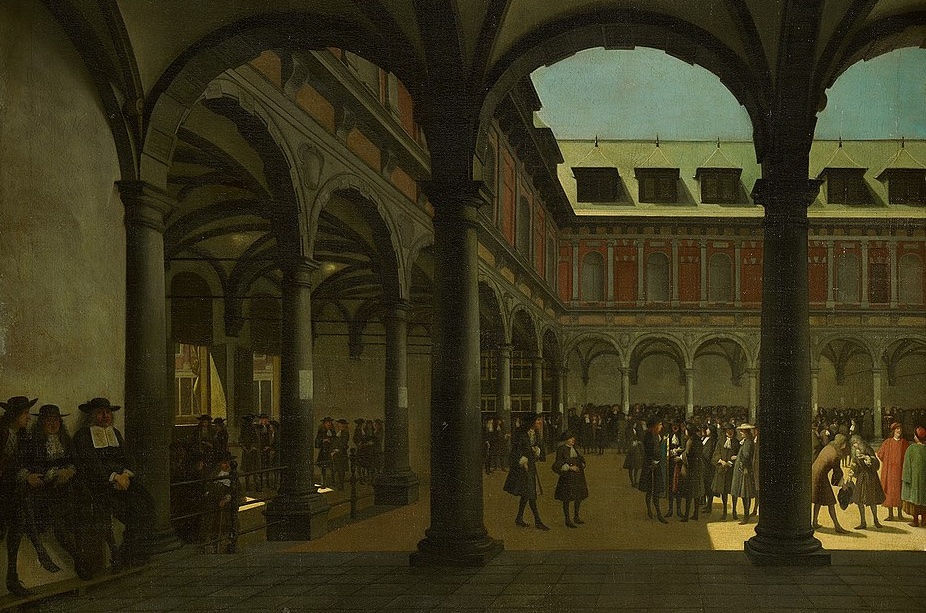

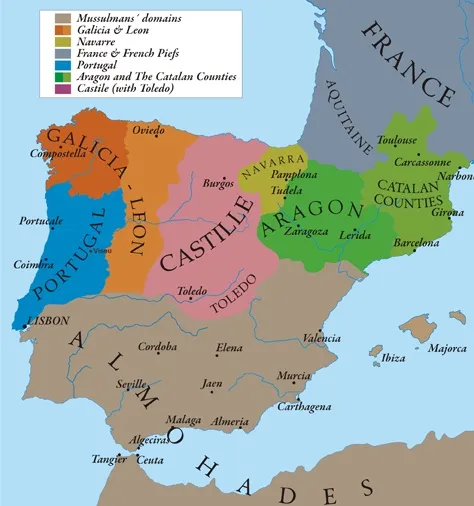

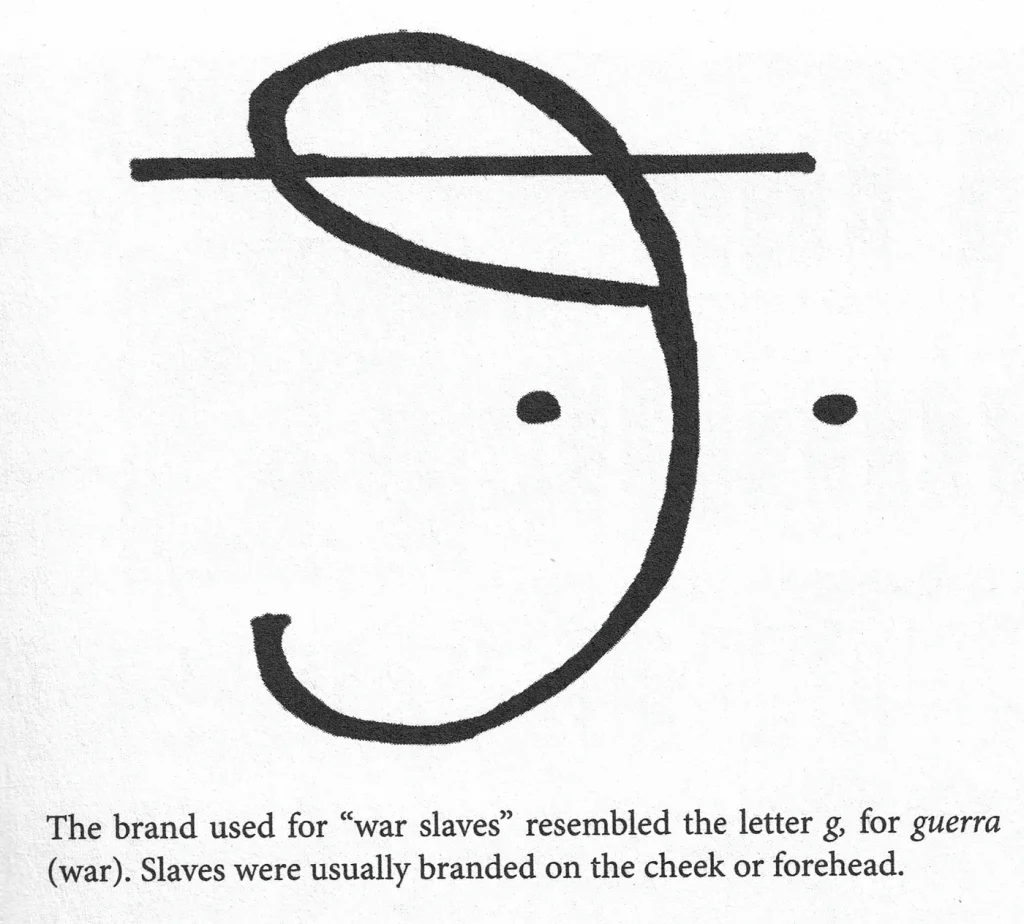
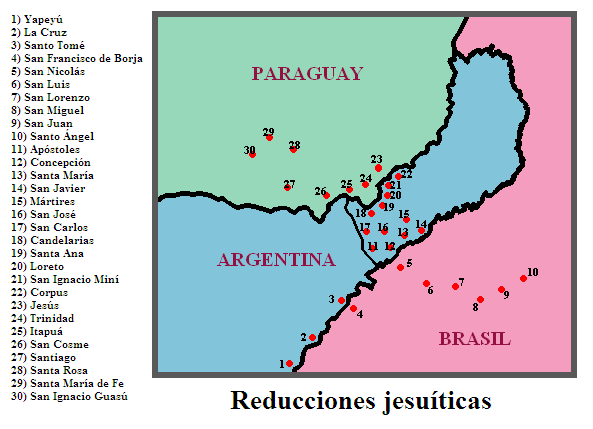
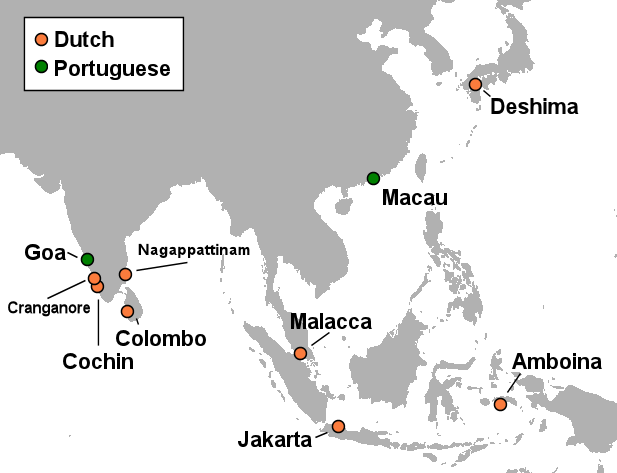


One thought on “History of the West’s domination of the world, Ep. 2 (through 1776)”
Comments are closed.